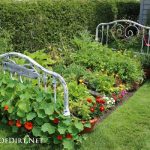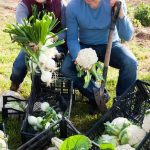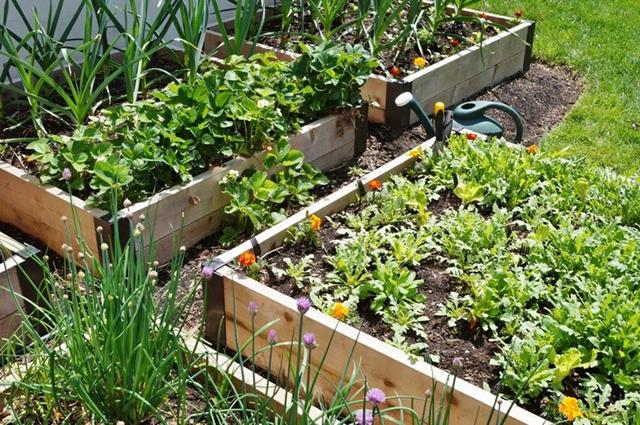Are you looking for a fun and educational activity to engage your kids in nature? Look no further than vegetable container gardening for kids. This hands-on activity is not only a great way to introduce children to the world of gardening, but it also promotes healthy eating habits and teaches valuable life skills.
Vegetable container gardening is perfect for kids because it offers numerous benefits. It allows children to learn about the plant life cycle, responsibility, and the satisfaction of nurturing something from seed to harvest. Additionally, the convenience and accessibility of container gardening make it an ideal option for families with limited outdoor space or urban dwellers.
When it comes to introducing kids to gardening, choosing the right containers is crucial. Containers should be lightweight, durable, and appropriately sized for children to handle easily. Considering these factors can ensure a positive and enjoyable gardening experience for kids while minimizing any potential frustrations.
By selecting the best vegetables for container gardening, such as cherry tomatoes, carrots, and snap peas, children can enjoy the excitement of growing their own food while learning valuable lessons about patience, nurturing, and where their food comes from. These kid-friendly vegetables are easy to grow in containers and typically yield satisfying results even for inexperienced young gardeners.
Choosing the Right Containers for Kids
When it comes to vegetable container gardening for kids, choosing the right containers is crucial for their success and enjoyment. Kids need containers that are manageable in size and weight, as well as durable enough to withstand their enthusiastic handling. The choice of containers can also impact the types of vegetables that can be grown, so it’s important to consider these factors when selecting the perfect containers for kids.
Size and Weight
When selecting containers for kids’ vegetable gardening, it’s essential to choose ones that are an appropriate size and weight for them to handle comfortably. Smaller pots or planters are ideal for children, as they can easily manage them without feeling overwhelmed. Additionally, lightweight materials such as plastic or lightweight ceramic are preferable over heavier options like terracotta or concrete.
Durability
Given the excitement and sometimes rough handling that may accompany kids’ gardening activities, durability is a key consideration when choosing containers. Look for containers made from sturdy materials that can withstand accidental drops or bumps without breaking. Plastic or resin-based containers are often a good choice due to their resilience while also being lightweight.
Drainage and Accessibility
Containers for kids’ vegetable gardening should also have proper drainage to prevent waterlogging, which can be detrimental to plant health. Additionally, make sure that the chosen containers allow easy access for planting, watering, and harvesting. Containers with wide openings or shallow depths may be more user-friendly for kids to work with effectively.
By carefully considering size, weight, durability, drainage, and accessibility when choosing containers for kids’ vegetable container gardening, you can create an enjoyable and successful gardening experience for children. With the right containers in place, kids can take pride in nurturing their plants from seedlings to harvest while learning valuable lessons about sustainable living and environmental responsibility.
Selecting the Best Vegetables for Container Gardening
When it comes to vegetable container gardening for kids, selecting the right vegetables is crucial to ensuring a successful and enjoyable experience. There are several factors to consider when choosing which vegetables to grow in containers with children.
One important factor is to select vegetables that are easy and quick to grow, as kids may quickly lose interest if they have to wait too long to see results. Additionally, choosing vegetables that are appealing to children in terms of taste and appearance can help maintain their excitement and engagement in the gardening process.
Some excellent options for kid-friendly vegetables that are well-suited for container gardening include cherry tomatoes, carrots, and snap peas. Cherry tomatoes are small and sweet, making them a popular choice among young gardeners.
Carrots are also great for containers as they can be grown in deep pots or window boxes, allowing kids to witness the progress of the carrot roots as they develop. Snap peas are another fantastic option, as they tend to thrive in containers and offer a delicious snack straight from the vine.
In addition to these options, radishes, lettuce, and peppers are also suitable for container gardening with kids. These vegetables grow relatively quickly and can provide an opportunity for children to learn about different plant structures and the variety of produce that can come from a small space. By offering a selection of diverse yet kid-friendly vegetables for container gardening, parents and educators can create an enriching learning experience that promotes healthy eating habits and environmental consciousness in children.
| Vegetable | Reasons for Selection |
|---|---|
| Cherry Tomatoes | Small size, sweetness |
| Carrots | Grown in deep pots or window boxes |
| Snap Peas | Easily thrive in containers |
Preparing the Soil and Planting Seeds
Container gardening is a fantastic way to introduce kids to the joys of gardening, and one of the most important steps in the process is preparing the soil and planting seeds. This hands-on activity not only teaches children about the natural growth cycle of plants but also instills responsibility and patience as they watch their seeds transform into thriving vegetable plants.
Additionally, introducing kids to the concept of sustainability and environmental responsibility can be seamlessly incorporated into this step, making it an educational and meaningful experience for them.
When preparing the soil for a vegetable container garden, it’s essential to choose high-quality potting mix that provides proper drainage and nutrients for the growing plants. Depending on the size of the containers, kids can be actively involved in scooping and filling them with soil, learning about the importance of a healthy growing environment for their vegetables. This process also requires teaching them about different types of soil components and why they are necessary for plant growth.
After properly setting up the containers with soil, it’s time to plant the selected vegetable seeds. Children can have fun using small trowels or their hands to create spaces in the soil for planting, giving them a sense of ownership and involvement in every step of the process.
Throughout this activity, adults can explain concepts such as seed depth and spacing, ensuring that kids understand how these factors contribute to successful seed germination and plant growth. By involving kids in preparing the soil and planting seeds for their vegetable container garden, they not only learn important horticultural skills but also gain a sense of pride and accomplishment as they witness their efforts blooming in front of their eyes.
Watering and Caring for the Plants
One of the most crucial aspects of vegetable container gardening for kids is teaching them the responsibility of caring for their plants. Learning how to water and nurture their vegetables helps children understand the importance of providing care and attention to living things.
It also instills a sense of ownership and pride as they watch their plants grow and thrive. In addition, this hands-on experience can contribute to a child’s overall understanding of how food is grown and cultivated.
When it comes to watering, kids should be taught the importance of consistency without overwatering their plants. One way to do this is by creating a watering schedule that allows them to check on their plants at regular intervals.
Depending on the type of vegetable being grown, kids can learn when, how much, and how often to water their containers. Kids can also utilize tools like small watering cans that are suitable for little hands, ensuring that they have an active role in caring for their garden.
In addition to watering, there are other caring tasks that kids should participate in, such as monitoring for pests or diseases and ensuring that plants receive adequate sunlight. By involving children in these activities from an early age, parents and educators can instill valuable skills related to observation, problem-solving, and nurturing living organisms which can all contribute significantly to a child’s overall development.
| Vegetable | Best Container Size |
|---|---|
| Cherry Tomatoes | 5 gallons per plant |
| Carrots | 12-inch deep pot or window box |
| Snap Peas | Container at least 8 inches deep |
Harvesting and Enjoying the Fruits of Their Labor
When it comes to vegetable container gardening for kids, one of the most exciting parts is being able to harvest and enjoy the fruits of their labor. Not only does this teach children about where their food comes from, but it also allows them to experience the joy of seeing something grow from a tiny seed into something they can eat. Here are some tips for harvesting and enjoying the produce from your vegetable container garden:
1. Timing is everything: Teach kids about when each vegetable is ready to be harvested. For example, cherry tomatoes should be picked when they are plump and fully colored, carrots can be harvested once they reach a desired size, and snap peas should be picked when the pods are full but not yet tough.
2. Get them involved in the process: Encourage kids to take an active role in harvesting by letting them use child-friendly tools like scissors or small garden snips to cut the vegetables from the plant. This gives them a sense of accomplishment and independence.
3. Enjoying the rewards: After all the hard work of planting, watering, and caring for their vegetable container garden, it’s time for kids to enjoy the fruits of their labor. Whether it’s adding freshly-picked cherry tomatoes to a salad, snacking on sweet snap peas right from the vine, or tasting the earthy sweetness of home-grown carrots, kids will gain an appreciation for fresh, healthy food that they had a hand in growing themselves.
Overall, teaching kids about harvesting and enjoying the produce from their vegetable container garden not only fosters a love for gardening but also encourages healthy eating habits and empowers children with valuable life skills.
Fun and Educational Activities to Accompany Gardening
One of the best ways to get kids excited about vegetable container gardening is to make it a fun and educational experience. By incorporating engaging activities and games, you can keep children interested and teach them valuable lessons about nature and sustainability along the way.
Planting a Rainbow
An interactive and colorful activity that kids will love is “planting a rainbow.” This involves selecting an assortment of vegetables in different colors, such as red tomatoes, orange carrots, yellow squash, green peas, and purple eggplants. Have the kids arrange the seeds or seedlings in their containers in rainbow order, teaching them about the variety of produce available while creating a visually appealing garden.
Garden Scavenger Hunt
To make gardening even more entertaining, organize a garden scavenger hunt for the children. Create a list of items they need to find or tasks they need to complete within the garden, such as spotting a ladybug, watering a specific plant, or identifying different types of leaves. This activity not only keeps kids engaged but also teaches them to observe and appreciate the natural environment around them.
DIY Garden Markers
Another enjoyable activity for kids is making their own garden markers. Provide materials like popsicle sticks, paint or markers, and stickers for decoration. As each vegetable is planted in its designated container, have the kids create unique markers to identify each plant. This encourages creativity and allows children to take ownership of their garden while learning about organization and categorization.
By incorporating these fun and educational activities into vegetable container gardening for kids, you can enhance their overall gardening experience and instill important lessons about nature and sustainability in an enjoyable way. These activities not only make gardening an entertaining pastime but also help in developing a lifelong passion for caring for the environment.
Encouraging Sustainability and Environmental Responsibility
Teaching kids about vegetable container gardening is not only a fun and educational experience, but it also provides an excellent opportunity to instill important values of sustainability and environmental responsibility. By engaging in this activity, children can learn about the impact of their actions on the environment and how they can contribute to a more sustainable future. Here are some ways to encourage sustainability and environmental responsibility through vegetable container gardening for kids:
- Composting: Teach kids about the benefits of composting by setting up a small compost bin for their garden. This will help them understand the importance of reducing food waste and creating natural fertilizer for their plants.
- Recycling: Show kids how to repurpose household items as containers for their vegetables, such as yogurt cups, milk cartons, or old buckets. This will help them understand the concept of recycling and reducing waste.
- Water conservation: Educate kids about the importance of conserving water by incorporating practices such as using a watering can instead of a hose, collecting rainwater for irrigation, and mulching to retain soil moisture.
By integrating these sustainability practices into vegetable container gardening for kids, they can develop a deeper understanding of environmental responsibility while fostering a love for nature and gardening.
In addition to these practical applications, it’s important to have conversations with children about the interconnectedness of all living things and how our actions affect the world around us. Emphasize the importance of caring for plants, animals, and the earth in order to create a healthy and balanced ecosystem. Through these discussions and hands-on experiences in vegetable container gardening, children can develop a sense of stewardship towards the environment that will stay with them throughout their lives.
Conclusion
In conclusion, vegetable container gardening for kids is a fantastic way to introduce children to the world of gardening while also imparting valuable life skills. By providing a hands-on experience, children can learn about responsibility, patience, and the importance of caring for the environment. The ease and accessibility of container gardening make it a perfect activity for kids of all ages, allowing them to witness the entire growth process from planting seeds to harvesting their own vegetables.
By encouraging children to participate in vegetable container gardening, parents and educators can instill in them a passion for sustainable living and environmental responsibility. Through this hands-on activity, kids can gain an understanding of where their food comes from and develop a greater appreciation for nature. Additionally, teaching kids about the benefits of growing their own food can help foster healthy eating habits and an overall positive attitude towards fruits and vegetables.
Ultimately, vegetable container gardening has the potential to cultivate a lifelong love for gardening in children. As they witness the fruits of their labor and enjoy the delicious rewards from their own garden, kids can experience a sense of pride and accomplishment that will stay with them as they grow older. By providing opportunities for fun educational activities alongside this gardening experience, parents and educators can further enhance children’s enjoyment and understanding of this enriching pastime.
Frequently Asked Questions
How Do You Make a Container Garden for Kids?
You can make a container garden for kids by choosing a variety of colorful and easy-to-grow plants like cherry tomatoes, strawberries, and basil. Use large containers with good drainage and let the kids get involved in planting and caring for the garden.
What Is the Easiest Vegetable to Grow in a Container?
The easiest vegetable to grow in a container is lettuce. It doesn’t require a lot of space, can be harvested as needed, and grows well in shallow containers. Lettuce also tolerates partial shade, making it versatile for different growing conditions.
What Vegetables Can You Grow Together in a Container?
There are several vegetables that can be grown together in a container, such as tomatoes, basil, and peppers. These companions not only complement each other’s growth habits but also enhance each other’s flavors when eventually harvested and used in cooking.
Just make sure to choose a container large enough to accommodate the different plants’ roots and provide proper spacing for each variety.

If you’re looking to get into vegetable gardening, or are just looking for some tips on how to make your current garden better, then you’ve come to the right place! My name is Ethel and I have been gardening for years. In this blog, I’m going to share with you some of my best tips on how to create a successful vegetable garden.





